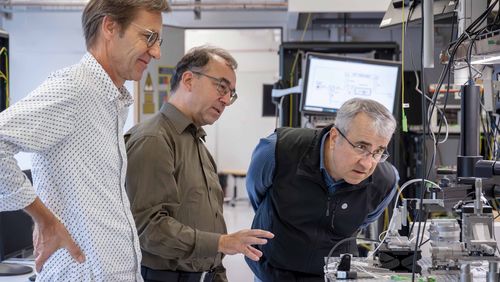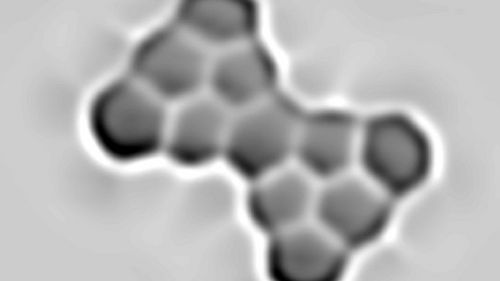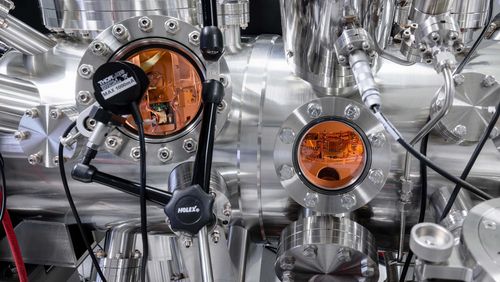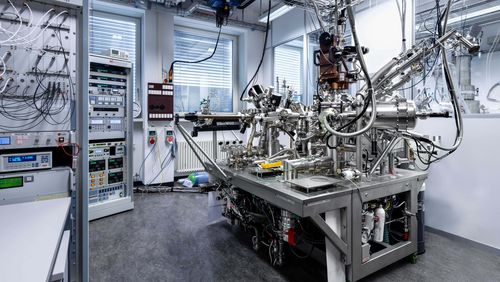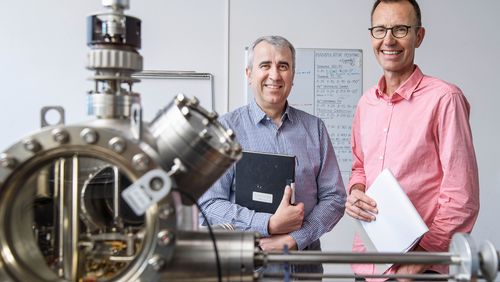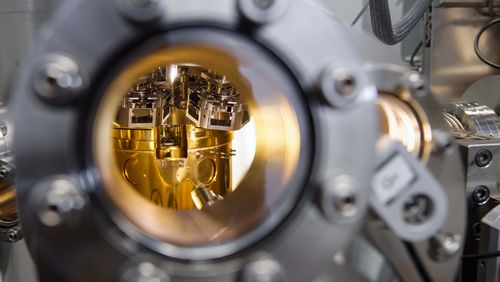
CarboQuant
There’s an enormous amount of untapped potential in the field of quantum physics, where an entirely different set of laws applies. While it’s possible to build ultra-fast quantum computers, the procedure is highly demanding, and quantum physics has not yet found the place it deserves in our daily lives. This will soon change, thanks to the CarboQuant project at Empa, near Zurich, which the Werner Siemens Foundation has been financing since 2022.
The researchers on the CarboQuant team at Empa, Swiss Federal Laboratories for Materials Science and Technology in Dübendorf, Switzerland, are working on a methodology and infrastructure to further develop carbon nanostructures whose quantum effects can be used in a broad range of electronic components. The aim is for these novel components to function at room temperature and find application in common devices.
Roman Fasel is project leader of CarboQuant, his colleague Oliver Gröning deputy project leader. For the past twelve years, the two physicists have been working with their team to create the scientific basis for their new project: graphene nanoribbons. Over time, they’ve accumulated knowledge on how to control quantum effects through altering a nanoribbon’s structures. They’re now able to manipulate the complex graphene nanoribbons with ultra-high precision – a major development, as changes to one single atom makes an enormous difference.
The researchers plan to use the funding from the Werner Siemens Foundation to build a technology platform on which graphene nanoribbons, as the basic material, are available in a type of library. At the same time, they also plan to establish a dependable infrastructure and methodology to characterise the nanoribbons. To further develop the nanomaterials for use in daily devices, however, a great deal of painstaking labour still awaits them.
The Empa nanoribbons already meet a key requirement: they remain stable at normal ambient temperatures. This is a major difference to developments in the many other quantum technology projects being conducted all over the world, which rely on extremely low temperatures and thus need gigantic, horrendously expensive cooling systems. In the CarboQuant project, the overall aim is a quantum technology that doesn’t require costly cooling systems, that consumes less energy and that’s based on carbon – which is non-toxic, inexpensive and widely available. In short, a technology for everyday applications and devices.
Facts and figures
Project
The CarboQuant team at the Swiss Federal Laboratories for Materials Science and Technology (Empa) in Dübendorf near Zurich aim to establish a methodology and an infrastructure to further develop carbon nanostructures whose quantum effects can be used for electronic components. The overall goal is to develop quantum electronic components that function at room temperature and that can be used for everyday purposes.
Support
The Werner Siemens Foundation is financing the infrastructure and the salaries of specialists and junior researchers in the CarboQuant project; the funding also covers material costs.
Funding from the Werner Siemens Foundation
15 million euros over 10 years
Project duration
2022 to 2032
Project leader
Prof. Dr Roman Fasel, Adjunct Professor at the Department of Chemistry, Biochemistry and Pharmaceutical Sciences at the University of Bern and Head of nanotech@surfaces Laboratory at the Swiss Federal Laboratories for Materials Science and Technology (Empa), Dübendorf, Switzerland
Collaboration in organic synthesis
Technische Universität Dresden, Germany; Max Planck Institute for Polymer Research, Mainz, Germany; Nagoya University, Nagoya, Japan
Collaboration in nanofabrication, characterisation and quantum computers
Binnig and Rohrer Nanotechnology Center, Rüschlikon, Switzerland; Technical University, Delft, Netherlands; University of California, Berkeley, USA
Collaboration in theory and simulations
International Iberian Nanotechnology Laboratory (INL), Braga, Portugal; Rensselaer Polytechnic Institute, Troy, USA

